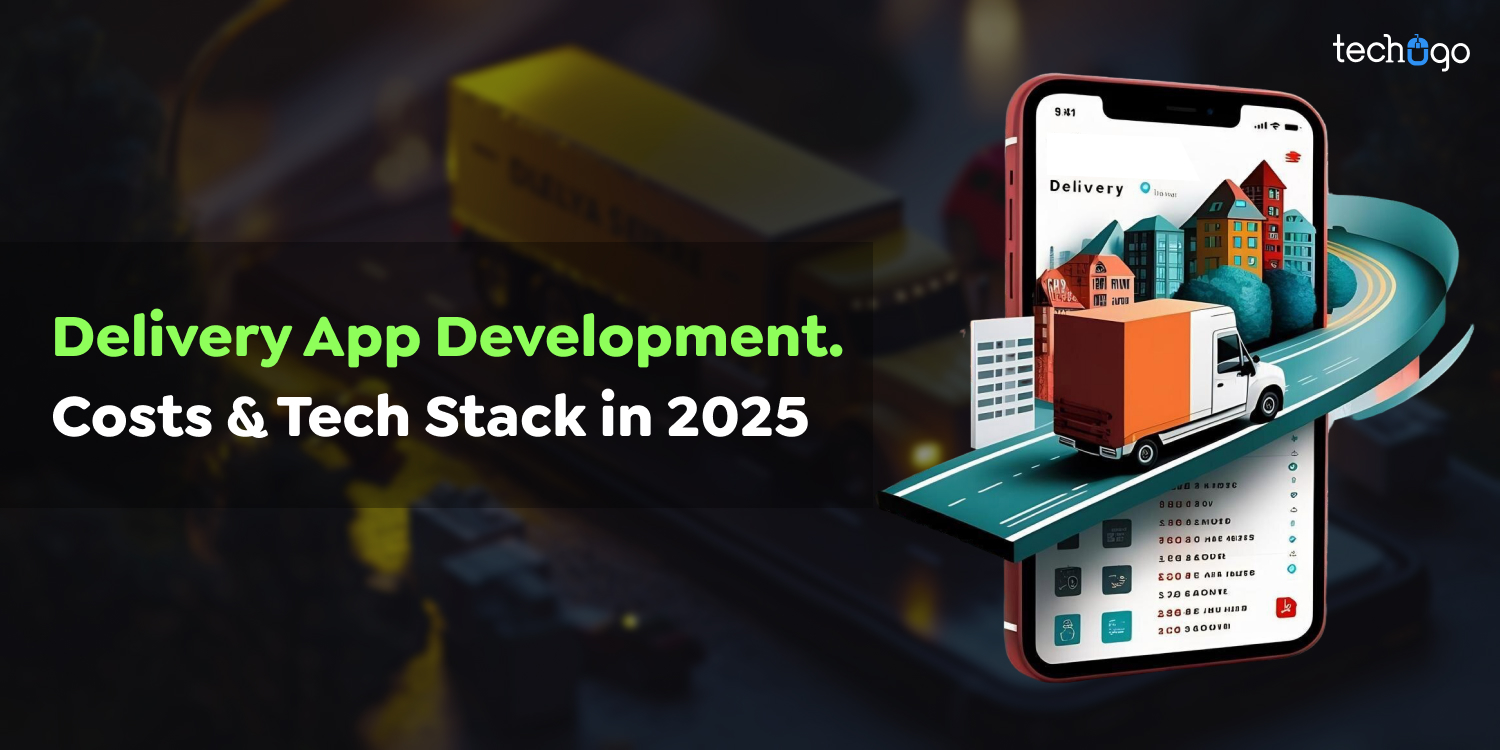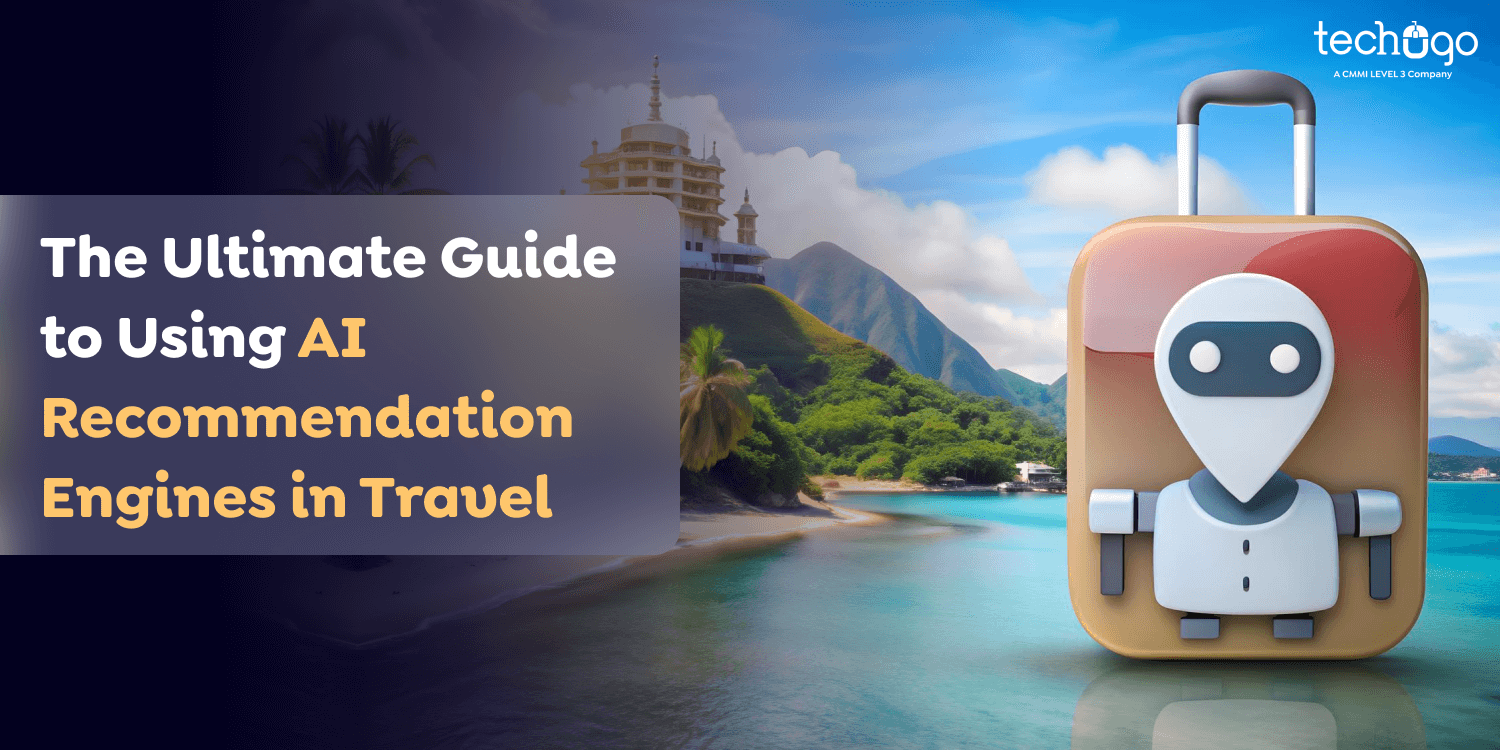3 Mar 2025
Delivery App Development. Costs & Tech Stack in 2025
Matthew Connor

In the current, rapidly changing logistical landscape, there is an increased demand for more efficient service delivery and pickup. Additionally, the need for efficient, technologically-driven courier delivery app development solutions is becoming more apparent. If you are an entrepreneur looking to capitalize on the opportunities in this area, now is the ideal time.
With the growth of e-commerce delivery services, local deliveries, and on-demand services, companies must offer quick, reliable, and easy-to-use solutions to meet customer expectations. This is why courier delivery app development is vital.
Mobile app development is one of the most challenging tasks, but it can yield amazing results when done correctly. Given the intense competition in the marketplace, only the best platform will lead to success. An experienced mobile app development firm must not overlook any of the critical elements necessary to ensure a successful application.
Furthermore, failing to eliminate errors and bugs, or relying on an outdated technology stack, could damage the potential of the concept. It could also harm the business’s credibility and revenue stream.
In this blog, we will discuss the costs and tech stack for courier delivery app development in 2025.
What Is a Courier Delivery App?
A courier app is an effective tool that enables businesses to provide fast and reliable services to customers. By leveraging the latest technology, companies can streamline their delivery processes and offer real-time tracking. This ensures customers have complete control and confidence throughout the service.
By optimizing routes, monitoring inventory, and automating various aspects of delivery, businesses can enhance operational efficiency and meet the ever-growing demands of today’s technology-savvy consumers. A seamless and easy service not only boosts customer satisfaction but also helps businesses gain a competitive edge in the marketplace.
Different Types of On-Demand Courier Delivery Apps
There are several types of on-demand customized courier delivery app solutions available on the market, catering to different industry needs and customer preferences. Popular options include apps for food delivery and grocery delivery. Other types include e-commerce delivery apps and same-day/next-day courier services.
Each app type delivers unique features as well as benefits, making it important for businesses to understand their target market and select the appropriate platform to meet their demands. With the growth of online-demand delivery platforms, customers now have more control over when and where they’d like their packages delivered.
Real-Time Courier Tracking App
Real-time tracking is a crucial feature in every on-demand delivery application. It enables customers to easily monitor the progress of their delivery, providing a sense of security and assurance about their purchases. By using GPS technology, users can track the exact location of their parcel and get an estimated delivery time, eliminating any uncertainty or anxiety regarding the delivery process.
Parcel Delivery App
These apps are designed for individuals or businesses that need to ship regularly. They offer various useful features that cater to the specific needs of frequent senders. By allowing users to place large orders, schedule regular deliveries, and choose different delivery methods, these apps help streamline the shipping process.
Additionally, they provide advanced tracking features and proof of delivery, adding convenience and security throughout the delivery process. Whether for commercial or personal shipments, these apps are essential for safe and efficient parcel delivery.
Branded Courier Delivery & Integrated Solutions
Branded courier services are well-known for providing the highest standards of service and convenience for businesses, allowing them to stand out against their competition. These services offer a designated group of couriers, brand-name vehicles, and customized delivery options, giving businesses full control over their branding and image, as well as their customers’ experiences during delivery.
Additionally, integration options like API connections with eCommerce platforms or ERP systems enhance shipping efficiency, making it easier for businesses to manage as well as monitor their deliveries in real time.
Key Features Of a Courier Delivery App
When developing a courier delivery app, it is crucial to focus on the most important elements to ensure the app is distinctive and provides real value to users. Here are the key features that should be incorporated into the app to improve customer experience, increase efficiency, and keep customers engaged:
User Registration and Profile Management
The first step in any courier application is user registration. Offering social logins, email registration, and profile management options allows users to store personal information, payment details, and delivery preferences. This feature ensures clients can quickly schedule deliveries without having to re-enter their information each time.
Real-Time Tracking and Notifications
Real-time tracking is a core feature in courier delivery app development. With GPS integration, customers can track their package’s progress and receive push notifications about delivery status, delays, or estimated delivery times. This builds customer confidence and helps reduce queries about delivery status.
Route Optimization and GPS
Route optimization ensures deliveries are completed quickly and on time. By using GPS technology and sophisticated algorithms, the app can determine the fastest route for couriers, reducing delivery time and costs. Additionally, it helps optimize fuel consumption, thereby increasing overall operational efficiency.
Dashboard and Analytics
Create a dashboard that allows admins and users to track and analyze delivery processes. It should include order history, delivery reports, and performance analysis.
Invoice Generating Tool
The courier delivery app development should have the ability to generate electronic invoices, which can be directly sent via email or mobile. The invoice must include information such as the order number, shipping costs, and other relevant details.
Payment Integration
Seamless payment integration is crucial for providing users with a smooth experience. Providing multiple payment options like credit or debit cards, digital wallets, and cash-on-delivery, can help meet the needs of a variety of customers. This flexibility helps clients to choose the most secure and convenient payment option.
Quick Delivery
A “Quick Delivery” feature can be added to the app design for users who are willing to pay extra for faster delivery. This feature should allow parcels to be delivered in the shortest possible time.
Ratings and Reviews
Incorporating a review and rating system enhances trust and transparency. Users can provide feedback on their service experiences, which helps businesses optimize their services based on customer input. This feature also builds credibility and strengthens customer loyalty.
Admin Panel Features
An admin panel enables businesses to track deliveries, manage users, and monitor performance. Additionally, it is an essential tool for overseeing operations, resolving issues, and managing the app’s backend. This system ensures that the company can grow and respond to customer queries efficiently.
In-App Calendar Integration
This feature in courier delivery app development allows customers to schedule deliveries at a convenient time and date. Similarly, delivery drivers can efficiently organize their routes and optimize their work schedules. This makes the delivery process simpler for both parties and reduces the risk of delayed or missed delivery times.
Exclusive Offers & Rewards
To attract and retain clients, offering exclusive deals or rewards within your app can be highly effective. This could include discounts on delivery charges, loyalty programs, or even free delivery options for frequent customers. By providing these benefits, you can encourage user loyalty and set your app apart from the competition.
Understanding Courier Delivery App Development Cost
Courier delivery app development is a complex process that involves several variables that directly impact the price. The courier delivery app’s complexity, the features it offers, the tech stack used, the location of the development team, and the duration of development all play a key role in determining the final cost.
The average cost of courier delivery app development services can start at around CAD 28,000 to CAD 40,000. A more advanced, customized application can range from CAD 60,000 to CAD 120,000 or higher, especially if developed in countries with higher labor costs. It’s important to keep in mind that regular maintenance, upgrades, server charges, and third-party service subscriptions are part of the total cost of ownership throughout the life of the application.
Basic App Development
Starting at CAD 30,000 and going up to CAD 40,000, this package provides the essential features needed to lay the groundwork for your app’s functionalities and user experience. From user authentication to basic data storage, this package offers a solid foundation to begin your app development journey.
Intermediate App
Priced between CAD 40,000 and CAD 60,000, this package includes additional features designed to enhance interaction, efficiency, and functionality. In addition to standard options, expect features like push notifications, social media integration and more advanced data management tools. This is a great option for those looking to build a more powerful app.
Advanced App Customization
For a custom courier delivery app development with unique capabilities and features, the price can go up to CAD 120,000 or more. This package offers a wide range of customizations tailored to individual needs. From sophisticated user interfaces to advanced data algorithms, this package is perfect for those who require an app that is uniquely designed for their business.
Factors That Can Affect Courier Delivery App Development Cost
There are many factors involved in courier delivery app development that affect costs and can alter the price. Costs can be impacted by last-minute changes, such as adding additional features, altering the layout, or increasing the charges for the development team. Below are key factors that can greatly impact your costs:
Platforms
The two main platforms for app development are Android and iOS. Each platform has licensing costs and other charges associated with development. Select the platform that best suits your project’s budget and requirements.
Development Team
The team that develops your project is a major factor in the overall cost. If the demands or complexity of your project are not too high, you may be able to engage a less experienced developer. However, if the complexity or requirements of your project are greater, you may need to hire a more skilled developer. Keep in mind that more experienced developers generally result in higher development costs.
Simple and Advanced Features
Features can be either basic or sophisticated. If you choose to include only the essential features in your app, the cost will likely stay within your budget. However, adding more advanced features will increase the overall development expenses. Therefore, it’s important to select features that align with your budget.
Tech Stacks
Tech stacks play a key role in the courier delivery app development. This includes a range of development resources such as programming languages, security measures, databases, cloud storage, frameworks, APIs, and testing integrations, among others. Additionally, some paid technological stacks can increase development costs.
Server Costs
In addition to courier delivery app development expenses, recurring charges related to infrastructure must be considered. These costs include server hosting, data storage, and other technical elements required for the app to function correctly. Server costs can vary based on factors like the size of the application, user traffic, and data storage requirements.
Third-party Services
Subscriptions for APIs and third-party services are typically required to integrate features such as payment processing, map integration, and analytics into your application. These services may incur additional costs that should be included in your overall budget. The exact cost will depend on the type of service you choose and the level of usage required.
Maintenance and Updates
Post-launch maintenance and updates to app functionality and content should be factored into your budget. As your app grows as well as the user demands evolve, frequent maintenance and updates will be necessary to make sure a smooth user experience. The cost of these updates can vary based on the app’s complexity and the time intervals between updates.
Technology Stack For Courier Delivery App Development
For a courier delivery application to stand out in the marketplace, the courier delivery app development company should choose the best technology stack. Below is a summary of the essential technologies that can be used to create a top-performing app.
Front-End Technologies
In front-end development, popular frameworks like React Native, Flutter, and Angular allow for cross-platform development, enabling developers to create apps for both iOS and Android using a single codebase. This reduces both development time and costs.
Back-End Technologies
For back-end development, Node.js, Ruby on Rails, and Python Django are ideal choices for building scalable and high-performance applications. These technologies support a broad array of features, such as real-time live tracking, integration with payment systems, and push notifications.
Database Technologies
Selecting the right data storage system is crucial to ensure your app can store large quantities of data effectively. MongoDB, MySQL, and PostgreSQL are all popular choices for courier applications. These databases are reliable and efficient solutions for securing logistics and user information.
APIs for Integration
Integrating third-party APIs for features such as real-time tracking, payment gateways, and maps is essential to enhance the functionality of your app. Popular APIs include the Google Maps API for routing and location services, and the Stripe API for secure payment processing.
How To Choose The Right Technology Stack For Delivery Apps?
Developers and businesses often face challenges when trying to pick the right technology stack for mobile app development from the many leading technologies available. Additionally, selecting the right tech stack depends on the strategy that a company in courier delivery app development is pursuing. Therefore, it’s crucial to choose the correct technology stack to ensure that the options are efficient and practical.
When looking for the most efficient tech stack for delivery applications, it’s important to consider a few key factors before making your decision.
App Requirements
Different apps serve different needs, and the devices they operate on can vary. Network conditions also differ due to various operations, expected user experiences, and time-to-market requirements. Additionally, the platform on which the app runs plays a significant role, along with other differentiating factors.
Given these varying requirements, it’s crucial for developers to choose the tech stack, framework, language, and other tools that are compatible with the app’s specific needs in order to get best results.
Organizational Skill Sets
Another key consideration when determining the ideal tech stack for a mobile app is the organization’s ability to manage it. Some frameworks, languages, and tools may appear similar and produce identical results, but there are subtle differences that set them apart. Therefore, if there is any ambiguity between options, it’s advisable to rely on the strengths of the development team.
If you’re unwilling to explore unfamiliar tools, be prepared for longer development times. On the other hand, working with software systems that are already well-known to your developers will improve both the efficiency and quality of your work.
Parent Company Technology
Another aspect to consider is the parent company of your selected technology stack. Top companies have more comprehensive and detailed documentation and community support than other brands. Suppose you evaluate Google, Adobe, and Microsoft. In that case, they offer excellent community support and more development choices, as opposed to Facebook’s providing React Native.
Mobile App Goals
When selecting the most suitable technology stack for mobile app development, the app’s goals are a crucial factor. Consider, for example, that the tech stack will always differ when looking to contrast a high-latency application against an app with very low latency. In addition, your application requires a lot of load processing and, thus, calls for a stronger and more efficient technology stack compared to apps with smooth and accurate interactions.
Multiple Platform Operation
Applications built for only one platform differ from those that operate across multiple platforms. The difference is reflected in the selection of the tech stack to create both kinds of applications. In the same way, the tools required to scale will require applications to be able to port them onto platforms like Cross-platform application development or Hybrid.
Security Pointers
If the application has a security issue, users and other users selling the app will likely dismiss it. This is why picking the most secure technology stack is essential for maximum results. There are instances when the technology stack can be challenging to use, not properly documented, or requires long codes, leading to increased risk during development.
In putting it all together this way, the developers’ expertise and experience play significant roles. Through their assistance and expertise, they can identify any flaws within the application, which could give hackers an opportunity to exploit the vulnerabilities left over from the development stage of an app.
Compatibility With Technology
Good compatibility with the technology already being used within the application is crucial to ensure that the app functions well. This is especially important when introducing the latest technology stack to build mobile applications.
Additionally, it is essential to verify the compatibility of your tech stack with the newest technology for the advancement of the app. For the most effective results, it’s vital to determine the compatibility of the technology stack and the tools you intend to integrate into your project.
In Conclusion
In the current technologically advanced landscape, distribution software is the lifeblood of any courier or delivery business. The marketplace for courier and parcel delivery apps is highly competitive, so creating an app that stands out requires understanding both the benefits customers seek and the challenges businesses must overcome. In reality, developing a courier or parcel distribution app is not enough on its own. There are many factors to consider.
In terms of costs, the price of courier delivery app development fluctuates based on the type of app created and a variety of other factors. Choosing the best technology for your project depends on the app’s requirements and the experience of the development team.
To consistently attract more customers in the long run, you must provide excellent customer service and a seamless user experience. One of the most crucial aspects is responding quickly to your clients’ delivery issues. By outsourcing to a trusted courier delivery app development company, you can ensure the prompt completion and timely release of your app.
Get In touch
We are excited to here from you and let’s start something special Together. Call Us for any inquiry.
Write us
sales@techugo.caJust a call away
About you




